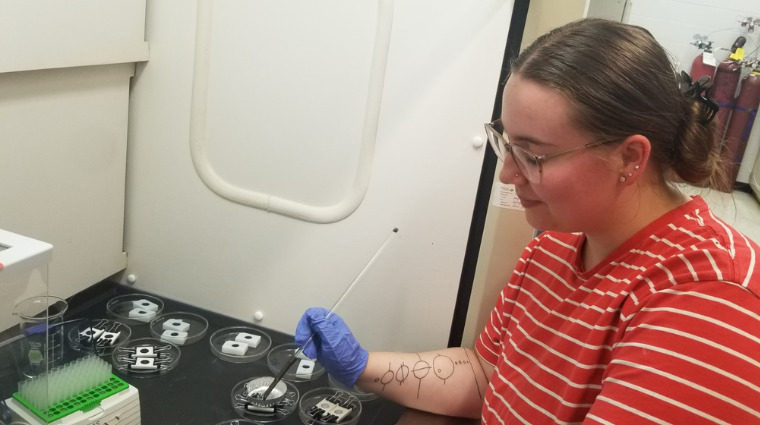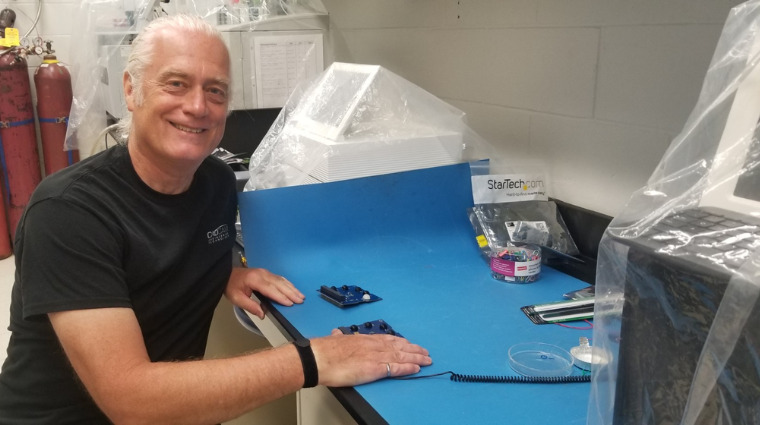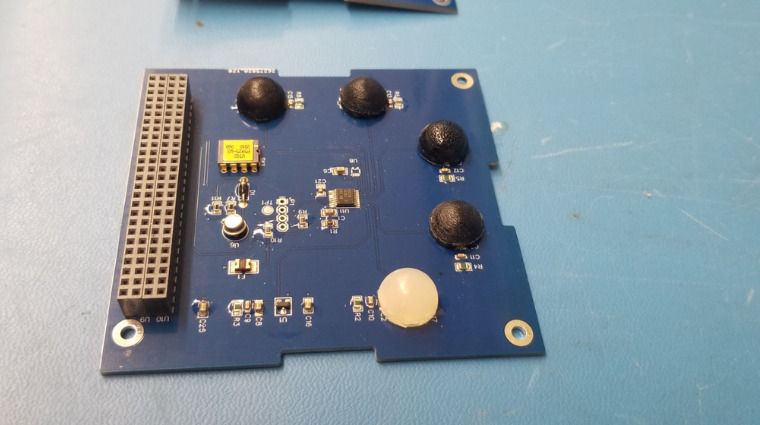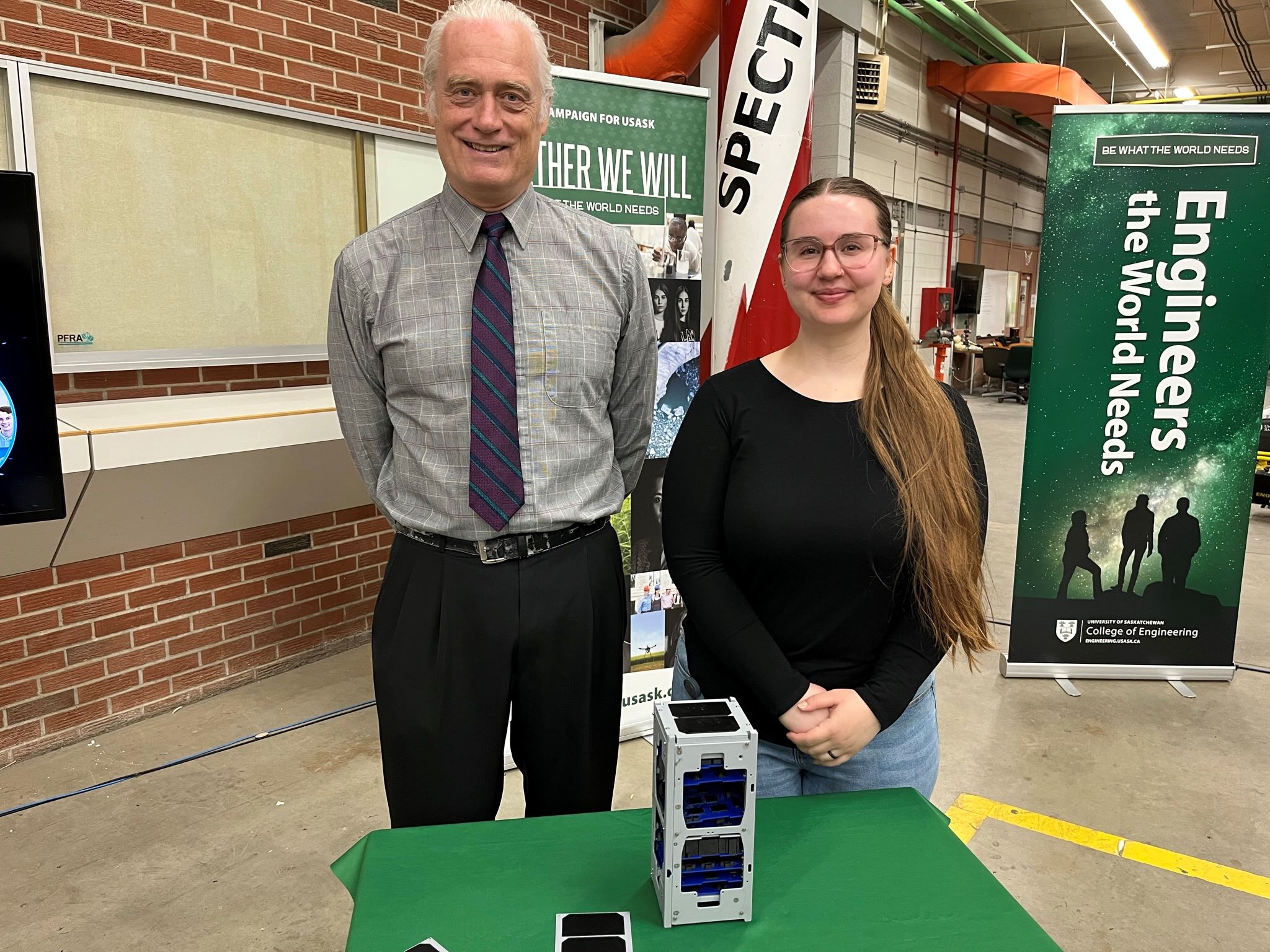
What is believed to be the first made-in-Saskatchewan satellite to be sent into space has a Saskatchewan Polytechnic connection.
A cube satellite, dubbed RADSAT-SK, developed by a team of students from the University of Saskatchewan (USask) will be launched June 3 to the International Space Station (ISS) via the SpaceX CRS-28 rocket. From the ISS, the satellite will be sent into its own orbit where it will remain for approximately one year. During that time the team will collect experimental radiation data from a ground station located on the USask campus. Sask Polytech students and faculty supported the USask team with their 3D printing and bioscience expertise.
“The RADSAT-SK cube satellite began development in spring 2018 with about 20 engineering undergraduate students on board,” said Dr. Sean Maw (PhD), principal investigator and Jerry G. Huff Chair in Innovative Teaching in the USask College of Engineering. “Since then, the project has grown immensely, with hundreds of students involved in some capacity over the years.”
The creation of the satellite is part of a project for the Canadian Space Agency (CSA) Canadian CubeSat Project (CCP), a program developed by the CSA to increase student interest in STEM across Canada while involving them in real space missions that contribute to the scientific community.
The RADSAT-SK satellite’s payload—what it is carrying as it orbits the Earth—focuses on radiation-based research. USask electrical and computer engineering professor Dr. Li Chen (PhD) and his team developed a dosimeter board to measure radiation from space. Dr. Ekaterina Dadachova (PhD) and her team within the USask College of Pharmacy and Nutrition developed a fungal melanin coating that has been placed on part of the board. Melanin pigments are found in many diverse fungal species which can inhabit some of the most extreme habitats on earth. The research goal of Dr. Dadachova’s work is to test the feasibility of melanin as a cosmic radiation shielding method in space, while the goal of Dr. Chen’s work is to measure radiation at a reduced cost compared to current methods.
“We’ve been involved in the RADSAT-SK project since the proposal stage,” says Tim Muench, Design and Manufacturing Engineering Technology program head at Sask Polytech. “Students and faculty from the Design and Manufacturing Engineering Technology, Electronic Systems Engineering Technology and BioScience Technology programs have shared their practical expertise and specialized equipment with the RADSAT-SK team.”
Sask Polytech’s focus was precision 3D printing the dome-shaped molds and then refining the process of mixing and curing exact percentages of the melanin in the domes and ensuring uniform properties throughout the samples as they cured in support of Dr. Ekaterina Dadachova’s fungal melanin research.
The RADSAT-SK project partners include the CSA, USask Space Design Team (USST), USask College of Engineering, and Saskatchewan Polytechnic. The industry partners include Calian Advanced Technologies and Galaxia Mission Systems, along with numerous individual donors. Dr. Brian Berscheid (PhD) of the USask College of Engineering also contributed mentorship for the team.



Learn more about the Design and Manufacturing Engineering Technology, Electronic Systems Engineering Technology and BioScience Technology programs.
Read the USask media release.

